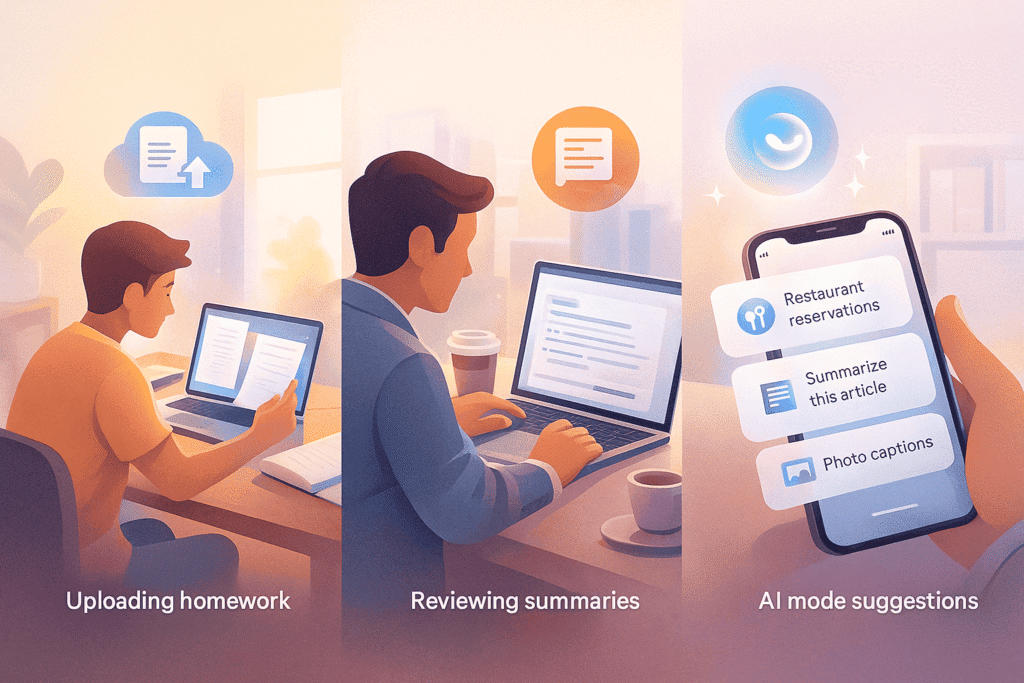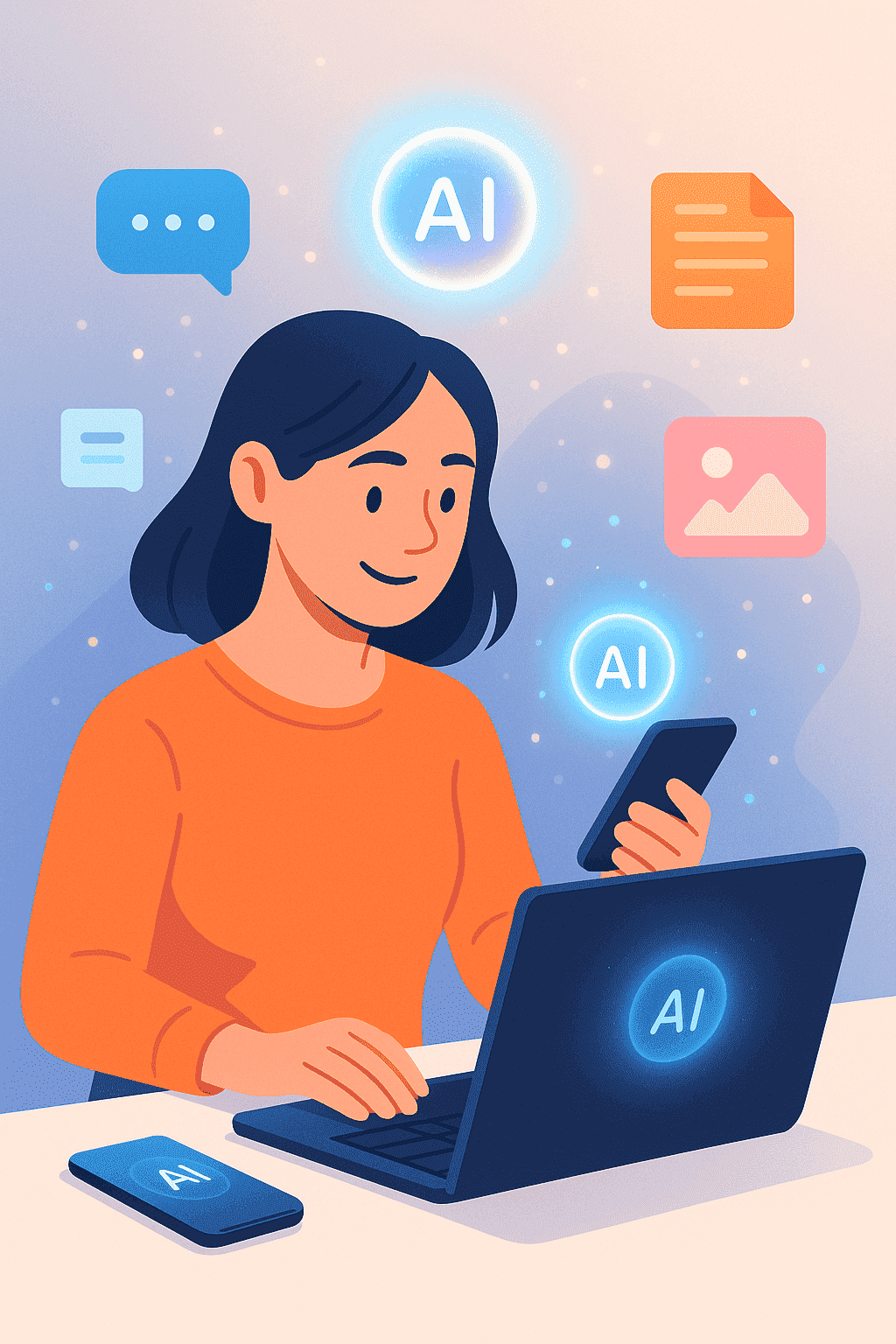Gemini 3 is Google’s newest and most advanced AI model. It is designed to understand information more accurately, reason through complex tasks, and work with text and images at the same time. Google has also introduced a new AI mode inside its apps to make everyday tasks faster and easier. This article explains Gemini 3 in clear, simple language so anyone can understand what it does and how it can help in real life.
Table of Contents
- What is Gemini 3
- New features of Gemini 3
- How Gemini models evolved
- Practical everyday use cases
- Easy step by step examples
1. What is Gemini 3?
Gemini 3 is the latest version of Google’s Gemini AI family. It is a powerful multimodal model, which means it can understand text, images, documents and other types of information together. You can use it inside the Gemini app, Google Workspace tools and in supported Google products. Developers and companies can also use it through Google Cloud.
The goal of Gemini 3 is very simple; to help people think, understand, create and solve everyday tasks with more accuracy and less effort.
2. New features of Gemini 3
a) Stronger reasoning
Gemini 3 gives clearer and more reliable answers, especially for tasks that require multiple steps. It can follow instructions more carefully and explain its thinking in an easier way.
b) Better understanding of images and documents
You can upload photos, screenshots or scanned documents, and Gemini 3 can read them with better accuracy. This is helpful for bills, handwritten notes, forms, diagrams, food labels, homework questions and more.
c) AI Mode in Google apps
Google has introduced an improved AI mode powered by Gemini 3.
When you activate this mode, the assistant can help with tasks such as summarising emails, preparing notes, rewriting text, generating ideas or explaining what is shown inside an image. The idea is to give you help instantly without switching apps.
d) More useful help inside Android and Workspace
Gemini 3 powers many new features in Google Workspace and Android.
For example:
- summarising a long email thread
- helping write a cleaner document
- explaining a complex spreadsheet
- helping manage phone settings
- reading what is visible on the phone screen and giving suggestions
e) Improved accuracy
One of the biggest upgrades is how much better the model handles details. It gives more precise summaries, fewer confusing responses and better explanations. This makes it more trustworthy for work, study and daily tasks.
f) Better support for developers and businesses
Companies can integrate Gemini 3 into their systems for customer support, productivity tools, analysis and automation. This allows teams to save time and improve decision making.
3. How Gemini evolved
| Version | What it introduced | What it meant for users |
|---|---|---|
| Gemini 1 | First multimodal model from Google | Could understand text and images together |
| Gemini 2 / 2.5 | Better reasoning and longer context | Could analyse large documents and code better |
| Gemini 3 | Improved accuracy, smarter reasoning, better multimodal vision and new AI mode | More reliable answers and easier help in real-world tasks |

4. Practical everyday use cases
a) Students
Students can upload homework photos, ask for explanations, practice questions or summaries. Gemini 3 can read diagrams, maths problems and handwritten notes more accurately.
b) Working professionals
People can use Gemini 3 to summarise documents, prepare meeting notes, rewrite emails or analyse reports. The upgraded AI mode can also help organise tasks across Workspace apps.
c) Small business owners
Gemini 3 can help write marketing content, create surveys, compare product images, summarise customer reviews or prepare simple financial summaries.
d) Parents and families
It can explain school topics, help plan meals, read nutritional labels from photos, manage schedules and create learning activities for kids.
e) Anyone using a phone daily
The model can read screenshots, understand what is on the screen and give quick answers without needing extra steps.
5. Simple examples anyone can try
Example 1: Understanding a bill
- Take a photo of your electricity bill.
- Ask: “Explain this bill in simple language and give the total amount due.”
- Gemini 3 reads the image and breaks down the charges clearly.
Example 2: Preparing for a meeting
- Upload notes, slides or screenshots.
- Ask: “Create a short meeting brief and note the key decisions.”
- It summarises everything into a neat, easy-to-read format.
Example 3: Learning something quickly
- Upload a picture of a textbook paragraph or handwritten notes.
- Ask: “Explain this to me like I am a beginner.”
- Gemini 3 returns a friendly, simple explanation.
Example 4: Writing help
- Paste a rough draft.
- Ask: “Rewrite this in a clear and professional tone.”
- The model gives a cleaner version without changing your meaning.
Summary
Gemini 3 is a major step forward in Google’s AI journey. It offers stronger reasoning, better understanding of images and clearer step-by-step help. The new AI mode inside Google apps makes everyday tasks simpler, whether you are a student, a working professional or a casual user. Its goal is to make technology feel more natural, helpful and easy to use.
FAQ
1. Is Gemini 3 available for everyone?
Many features are available through the Gemini app, Workspace and supported Google products. Some advanced features may roll out gradually.
2. Can Gemini 3 understand images well?
Yes. Gemini 3 has improved multimodal abilities, so it can read images, photos, screenshots and documents with better accuracy.
3. Do I need technical knowledge to use Gemini 3?
No. The model is designed for everyday users. You can simply type or upload a photo and ask your question.
4. Can Gemini 3 help at work?
Yes. It can summarise reports, draft emails, organise information, prepare presentations and help with research or analysis inside Google Workspace.
Thanks for your time! Support us by sharing this article and exploring more AI videos on our YouTube channel – Simplify AI


Leave a Reply